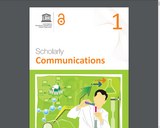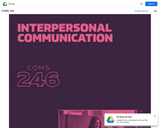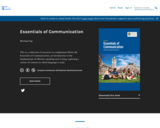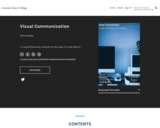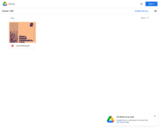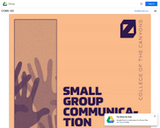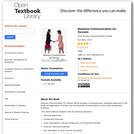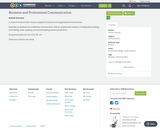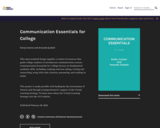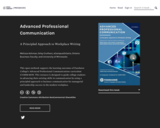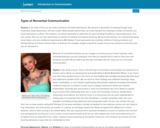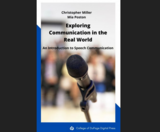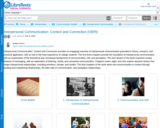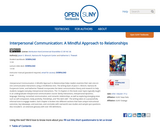
A Mindful Approach to Relationships
Short Description:
Return to milneopentextbooks.org to download PDF and other versions of this textNewParaInterpersonal Communication: A Mindful Approach to Relationships helps readers examine their own one-on-one communicative interactions using a mindfulness lens. The writing team of Jason S. Wrench, Narissra M. Punyanunt-Carter, and Katherine Thweatt incorporates the latest communication theory and research to help students navigate everyday interpersonal interactions. The 14 chapters in this book cover topics typically taught in an undergraduate interpersonal communication course: family interactions, interpersonal dynamics, language, listening, nonverbal communication, and romantic relationships, as well as exploring emerging areas such as self-compassion, body positivity, friendships, and “the dark side”. The writing takes on a purposefully informal tone to engage readers. Each chapter is broken into different sections that have unique instructional outcomes, key takeaways, and exercises, and concludes with real-world case studies and sample quiz questions. Also included is an extensive glossary with over 350 definitions.
Long Description:
Interpersonal Communication: A Mindful Approach to Relationships helps readers examine their own one-on-one communicative interactions using a mindfulness lens. The writing team of Jason S. Wrench, Narissra M. Punyanunt-Carter, and Katherine Thweatt incorporates the latest communication theory and research to help students navigate everyday interpersonal interactions. The 14 chapters in this book cover topics typically taught in an undergraduate interpersonal communication course: family interactions, interpersonal dynamics, language, listening, nonverbal communication, and romantic relationships, as well as exploring emerging areas such as self-compassion, body positivity, friendships, and “the dark side”. The writing takes on a purposefully informal tone to engage readers. Each chapter is broken into different sections that have unique instructional outcomes, key takeaways, and exercises, and concludes with real-world case studies and sample quiz questions. Also included is an extensive glossary with over 350 definitions.
Word Count: 225461
(Note: This resource's metadata has been created automatically by reformatting and/or combining the information that the author initially provided as part of a bulk import process.)
- Subject:
- Business and Communication
- Communication
- Material Type:
- Textbook
- Author:
- John S. Wrench
- Katherine S. Thweatt
- Narissra M. Punyanunt-Carter
- Date Added:
- 08/17/2020
